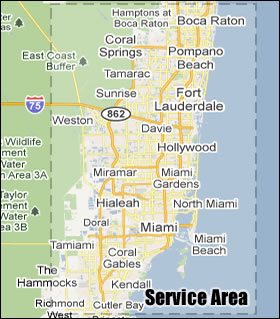There are many methods which are developed to measure the performance of the AC unit and the HVAC unit. They are also helpful in studying the running costs of the HVAC system. Also, using these metrics we can compare the HVAC systems and pick the right one which is suitable according to the requirement. Now using these metrics is not an easy way, because there are two conditions before you use them to compare the units. The first one is that different metrics cannot be compared. The second one is that when it is difficult to convert one metric to another. Because, then you have to compare the units according to the running costs.
For your clear understanding, HVAC repair Miami has clearly stated few performance metrics that will help you in providing an estimate.
Energy Efficiency Ratio (EER) and Seasonal Energy Efficiency Ratio (SEER)
The EER and SEER are both used to measure a ratio of the cooling output in Btu to heating input in watt-hour of the cooling unit. These metrics are not only used for cooling equipment, but also can be applied for heating equipment also.
EER
EER represents the ratio between cooling output in Btu to the input energy in Watt-hour. The EER can only be measured when there are some fixed conditions like fixed indoor temperature of 80 degree Fahrenheit and the outdoor temperature is 95 degree Fahrenheit. The cooling unit should be about 10 tons and above.
The formulas to calculate EER are:-
EER = Btu of cooling output / Watt-hour of electric input
EER = Btu/hr of cooling output / Watt of electric input
For example the AC unit provides 20, 000 Btu/hr of cooling air and used 1000 watts of electrical energy then EER= 20,000 / 1000 then EER= 20 Btu/Watt-hour
SEER
SEER is the calculation of how much heat is removed by the AC unit to how much electrical energy is consumed in Watts- per hour. SEER helps to calculate the cooling when the temperature is changing outside. The output of SEER calculation is higher than EER and is used for measurement of the coolness of the AC units which are above 10 tons.
COP (Coefficient of Performance)
It is used to measure that how much heat is removed from the cold space or is delivered to the hot space and is used to measure the output of the heat pumps. The COP is used to calculate the energy used in operating the system. The formula is as follows:-
Btu/hour out/Btu/hr in= kW out/ kW in
kW per ton of Cooling
This metric is used to measure cooling in kW per ton which is used for larger HAVC units such as chillers. It tells us the ratio between the electrical energy consumed by the HVAC in kW to how many tons of cooling provided by the HVAC.
For example:-
HVAC provides 10 tons of cooling and consumes 10 kW of electrical energy then
kW per ton of cooling is = 10/10= 1 kW/ton
HSPF (Heating Seasonal Performance Factor)
This metric is used to calculate the performance of the heat pump in the winters. It is the ratio of how much heat is given to the space to how much electrical energy is consumed. So when higher the HSPF, then the heat pump is more efficient. The HSPF >= 8 is considered good.
Relation Between some Performance Metrics so that you can Calculate Different Metrics Easily.
COP= EER/ 3.412 Btu/ Watt-hour
kW in/ton= 12/EER= 3.517/ COP
COP= HSPF/ 3.412 Btu/Watt-hour
1 watt will output 3.412 Btu per hour.


